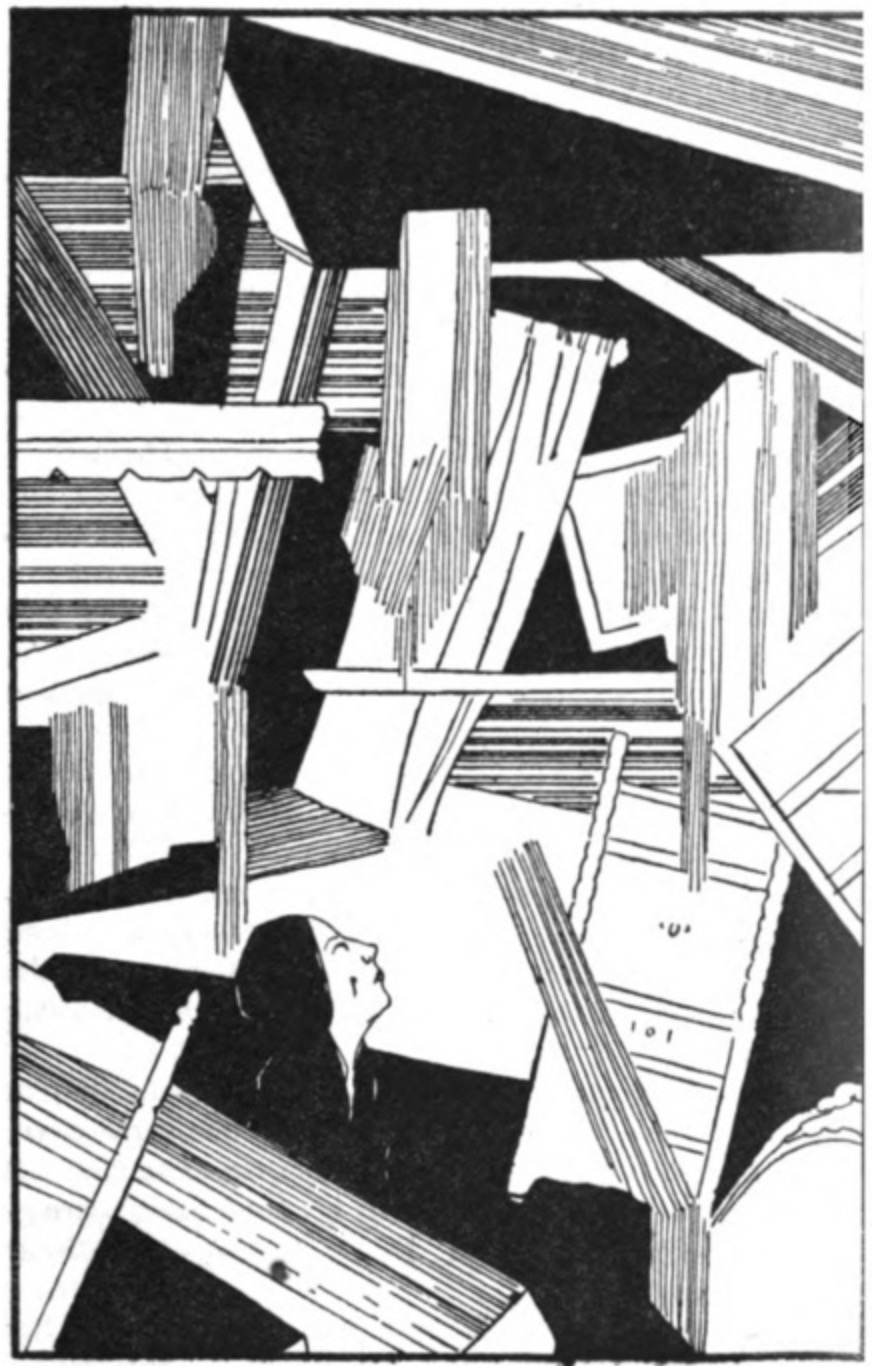WHERE THEIR FIRE IS NOT QUENCHED (7)
By:
February 16, 2024

May Sinclair’s “Where Their Fire is Not Quenched” was first published in the English Review in October 1922 and later appeared in Sinclair’s 1923 collection Uncanny Stories. It has frequently been reprinted in supernatural, horror, and fantasy anthologies; I’m grateful to Paul March-Russell, whose Modernism and Science Fiction encourages us to think of Sinclair as also being a proto-sf author. (PS: Interesting to compare this story’s ending with Sartre’s No Exit, p. 1944.) HiLoBooks is pleased to serialize it here for HILOBROW’s readers.
ALL INSTALLMENTS: 1 | 2 | 3 | 4 | 5 | 6 | 7 | 8 | 9 | 10.
She lingered for some hours in the room where these things had happened.
Its aspect was familiar and yet unfamiliar, and slightly repugnant to her. The altar, the crucifix, the lighted candles, suggested some tremendous and awful experience the details of which she was not able to recall. She seemed to remember that they had been connected in some way with the sheeted body on the bed; but the nature of the connection was not clear; and she did not associate the dead body with herself. When the nurse came in and laid it out, she saw that it was the body of a middle-aged woman. Her own living body was that of a young woman of about thirty-two.
Her mind had no past and no future, no sharp-edged, coherent memories, and no idea of anything to be done next.
Then, suddenly, the room began to come apart before her eyes, to split into shafts of floor and furniture and ceiling that shifted and were thrown by their commotion into different planes. They leaned slanting at every possible angle; they crossed and overlaid each other with a transparent mingling of dislocated perspectives, like reflections fallen on an interior seen behind glass.
The bed and the sheeted body slid away somewhere out of sight. She was standing by the door that still remained in position.
She opened it and found herself in the street, outside a building of yellowish-grey brick and freestone, with a tall slated spire. Her mind came together with a palpable click of recognition. This object was the Church of St. Mary the Virgin, Maida Vale. She could hear the droning of the organ. She opened the door and slipped in.

Then, suddenly the room began to come apart…
She had gone back into a definite space and time, and recovered a certain limited section of coherent memory. She remembered the rows of pitch-pine benches, with their Gothic peaks and mouldings; the stone-coloured walls and pillars with their chocolate stencilling; the hanging rings of lights along the aisles of the nave; the high altar with its lighted candles, and the polished brass cross, twinkling. These things were somehow permanent and real, adjusted to the image that now took possession of her.
She knew what she had come there for. The service was over. The choir had gone from the chancel; the sacristan moved before the altar, putting out the candles. She walked up the middle aisle to a seat that she knew under the pulpit. She knelt down and covered her face with her hands. Peeping sideways through her fingers, she could see the door of the vestry on her left at the end of the north aisle. She watched it steadily.
Up in the organ loft the organist drew out the Recessional, slowly and softly, to its end in the two solemn, vibrating chords.
The vestry door opened and Clement Farmer came out, dressed in his black cassock. He passed before her, close, close outside the bench where she knelt. He paused at the opening. He was waiting for her. There was something he had to say.
She stood up and went towards him. He still waited. He didn’t move to make way for her. She came close, closer than she had ever come to him, so close that his features grew indistinct. She bent her head back, peering, short-sightedly, and found herself looking into Oscar Wade’s face.
He stood still, horribly still, and close, barring her passage.
She drew back; his heaving shoulders followed her. He leaned forward, covering her with his eyes. She opened her mouth to scream and no sound came.
She was afraid to move lest he should move with her. The heaving of his shoulders terrified her.
One by one the lights in the side aisles were going out. The lights in the middle aisle would go next. They had gone. If she didn’t get away she would be shut up with him there, in the appalling darkness.
She turned and moved towards the north aisle, groping, steadying herself by the book ledge.
When she looked back, Oscar Wade was not there.
Then she remembered that Oscar Wade was dead. Therefore, what she had seen was not Oscar; it was his ghost. He was dead; dead seventeen years ago. She was safe from him for ever.
RADIUM AGE PROTO-SF: “Radium Age” is Josh Glenn’s name for the nascent sf genre’s c. 1900–1935 era, a period which saw the discovery of radioactivity, i.e., the revelation that matter itself is constantly in movement — a fitting metaphor for the first decades of the 20th century, during which old scientific, religious, political, and social certainties were shattered. More info here.
SERIALIZED BY HILOBOOKS: James Parker’s Cocky the Fox | Annalee Newitz’s “The Great Oxygen Race” | Matthew Battles’s “Imago” | & many more original and reissued novels and stories.
